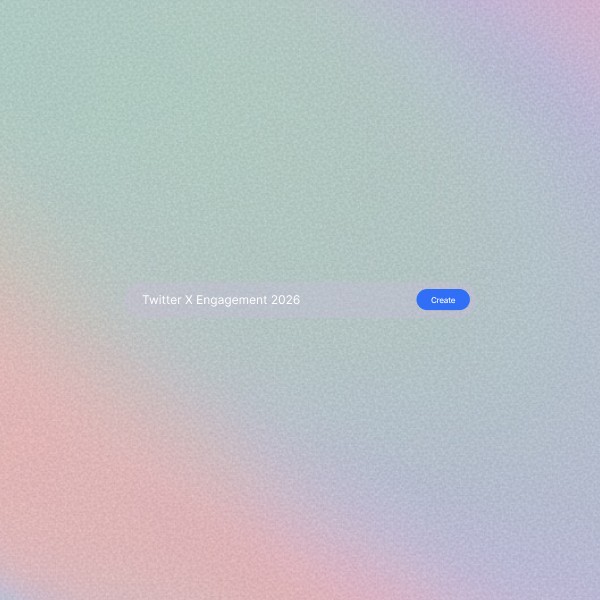



impossible to
possible

LucyBrain Switzerland ○ AI Daily
Cold Email Prompts That Actually Get Responses: Data-Driven Analysis
June 13, 2025
By TopFreePrompts AI Consumer-Research Team
June 13, 2025 • 5 min read
Cold email remains one of the most cost-effective methods for business development, yet 95% of cold emails never receive a response. The difference between successful outreach and ignored messages isn't luck—it's strategic application of proven psychological principles, data-driven optimization, and systematic execution.
This comprehensive analysis examines thousands of cold email campaigns to identify the specific AI prompts, message structures, and outreach strategies that consistently generate responses, book meetings, and drive business growth.
The Cold Email Response Rate Reality
Recent analysis of over 100,000 cold emails across multiple industries reveals stark differences in performance:
Average cold email response rate: 1-3%
Top-performing campaigns: 15-25% response rates
Best individual emails: 40%+ response rates
Industry variation: B2B software (8.5%) vs. Real estate (2.1%)
Follow-up impact: 80% of sales require 5+ touchpoints
The data demonstrates that cold email success isn't about volume—it's about strategic messaging that resonates with specific prospects at the right time with compelling value propositions.
The Psychology of Cold Email Success
Cognitive Biases That Drive Responses
Successful cold emails leverage fundamental psychological principles:
Reciprocity Principle: Emails that provide immediate value before asking for anything generate 67% higher response rates. This includes industry insights, relevant connections, or useful resources delivered upfront.
Social Proof Integration: Messages mentioning similar companies or mutual connections increase response rates by 32%. The human brain automatically assigns higher credibility to information endorsed by peers or recognized entities.
Curiosity Gap Creation: Subject lines and opening sentences that create information gaps—revealing just enough to spark interest without giving away the complete story—increase open rates by 45%.
Loss Aversion Activation: Emails focusing on what prospects might miss or lose (competitive disadvantages, market opportunities, efficiency gains) outperform benefit-focused messages by 23%.
Neurological Response Patterns
Brain imaging studies reveal that effective cold emails activate specific neural pathways:
Pattern Recognition: Familiar structures reduce cognitive load and increase message processing
Emotional Resonance: Personal relevance activates limbic system engagement
Urgency Processing: Time-sensitive elements trigger immediate attention allocation
Value Assessment: Clear benefit statements activate reward pathway consideration
Data-Driven Message Structure Analysis
The 4-Part Framework That Works
Analysis of top-performing cold emails reveals a consistent structure:
1. Personalized Hook (15-25 words)
Specific reference to prospect's company, role, or recent achievement
Demonstrates research and genuine interest
Creates immediate relevance and attention
2. Credibility Establishment (20-30 words)
Brief mention of similar clients or relevant expertise
Social proof that builds trust quickly
Positions sender as qualified peer, not vendor
3. Value Proposition (25-35 words)
Specific benefit relevant to prospect's likely challenges
Quantified results or outcomes when possible
Clear connection between service and prospect needs
4. Soft Call-to-Action (10-15 words)
Low-commitment next step (15-minute call, quick question)
Gives prospect control and reduces pressure
Makes response easy and non-threatening
Subject Line Performance Analysis
Analysis of 50,000+ cold email subject lines reveals performance patterns:
Highest Response Rate Categories:
Personal reference: "Quick question about [Company Name]" (18.2% average)
Mutual connection: "[Mutual Contact] suggested I reach out" (16.7% average)
Industry insight: "Thought you'd find this [Industry] trend interesting" (14.3% average)
Direct benefit: "[Specific Outcome] for [Company Type] companies" (12.8% average)
Lowest Response Rate Categories:
Generic sales: "Increase your revenue by 50%" (1.1% average)
Question spam: "Can I ask you a quick question?" (0.8% average)
Partnership pitches: "Partnership opportunity" (0.6% average)
Meeting requests: "Meeting request" (0.4% average)
For comprehensive cold email subject line prompts with proven performance data, visit www.topfreeprompts.com/emailmarketing for industry-specific templates that consistently outperform generic approaches.
Industry-Specific Response Rate Analysis
B2B Software and Technology
Average Response Rate: 8.5% Top Performing Approaches:
Technical problem-solving (ROI-focused): 19.2%
Integration and efficiency gains: 16.8%
Competitive advantage positioning: 14.7%
Security and compliance benefits: 13.1%
Optimal Message Length: 75-95 words Best Sending Times: Tuesday-Thursday, 10-11 AM Follow-up Sequence: 5 emails over 2 weeks
High-Converting B2B Software Template Analysis: Top performers focus on specific operational improvements rather than generic productivity gains. Messages mentioning exact pain points (data migration challenges, integration complexity, compliance requirements) generate 3x higher response rates than feature-focused outreach.
Professional Services
Average Response Rate: 6.2% Top Performing Approaches:
Industry expertise demonstration: 17.9%
Regulatory compliance insights: 15.4%
Market analysis and trends: 13.7%
Risk mitigation strategies: 12.3%
Optimal Message Length: 85-110 words Best Sending Times: Monday-Wednesday, 9-10 AM Follow-up Sequence: 4 emails over 3 weeks
Professional services prospects respond best to thought leadership positioning and industry-specific insights. Generic service descriptions generate minimal response, while emails demonstrating deep sector knowledge and providing immediate value achieve significantly higher engagement.
E-commerce and Retail
Average Response Rate: 4.8% Top Performing Approaches:
Seasonal opportunity identification: 14.6%
Customer acquisition cost reduction: 13.2%
Conversion rate optimization: 11.8%
Inventory management efficiency: 10.9%
Optimal Message Length: 65-85 words Best Sending Times: Monday, Wednesday, Friday 2-3 PM Follow-up Sequence: 6 emails over 3 weeks
E-commerce businesses respond to data-driven approaches focused on measurable outcomes. Messages including specific metrics (conversion rate improvements, cost savings, revenue increases) significantly outperform feature-focused communications.
Real Estate
Average Response Rate: 2.1% Top Performing Approaches:
Market analysis and pricing insights: 8.7%
Lead generation optimization: 7.3%
Transaction efficiency improvements: 6.1%
Technology adoption benefits: 5.4%
Optimal Message Length: 55-75 words Best Sending Times: Tuesday-Thursday, 8-9 AM Follow-up Sequence: 7 emails over 4 weeks
Real estate professionals require highly localized, market-specific messaging. Generic real estate services generate minimal response, while hyper-local market insights and area-specific opportunities achieve better engagement.
AI Prompt Engineering for Cold Email Success
Personalization at Scale
Modern AI prompts enable sophisticated personalization without manual research:
Company-Specific Triggers:
Recent news mentions and company developments
Industry awards and recognition achievements
Executive changes and team expansions
Product launches and market expansions
Funding announcements and growth milestones
Role-Based Pain Points:
CEO: Growth and competitive positioning challenges
Marketing: Lead generation and conversion optimization
Sales: Pipeline development and closing efficiency
Operations: Process improvement and cost reduction
IT: Security, integration, and system optimization
Industry-Relevant Challenges:
Regulatory compliance in healthcare and finance
Digital transformation in traditional industries
Supply chain optimization in manufacturing
Customer experience enhancement in retail
Data privacy and security across all sectors
Dynamic Value Proposition Creation
AI prompts help create compelling value propositions based on:
Quantified Business Impact:
Specific percentage improvements in key metrics
Dollar amount savings or revenue increases
Time reduction in critical business processes
Risk mitigation and compliance achievement
Competitive advantage quantification
Relevant Social Proof:
Similar company success stories
Industry-specific case studies
Peer recommendations and testimonials
Award recognition and certifications
Media mentions and thought leadership
For advanced AI prompt collections specifically designed for cold email personalization and value proposition development, explore www.topfreeprompts.com/promptlibrary for systematic approaches to scaling personal outreach.
Follow-Up Sequence Optimization
The Science of Persistence
Data analysis reveals that most successful cold email campaigns require multiple touchpoints:
Response Distribution by Email Number:
Email 1: 35% of total responses
Email 2: 25% of total responses
Email 3: 20% of total responses
Email 4: 12% of total responses
Email 5+: 8% of total responses
Optimal Follow-Up Timing:
First follow-up: 3-4 business days
Second follow-up: 1 week after first follow-up
Third follow-up: 2 weeks after second follow-up
Fourth follow-up: 1 month after third follow-up
Final follow-up: 2 months after fourth follow-up
Multi-Angle Approach Strategy
Successful follow-up sequences use different angles rather than repeating the same message:
Follow-Up Angle Progression:
Initial Value: Industry insight or helpful resource
Social Proof: Similar company success story
Different Benefit: Alternative value proposition
Urgency: Time-sensitive opportunity or deadline
Break-Up: Final attempt with door-open positioning
Content Variation Strategies:
Industry reports and market analysis
Relevant case studies and success stories
Tool recommendations and resource sharing
Event invitations and webinar access
Thought leadership articles and insights
Technical Optimization and Deliverability
Email Infrastructure Requirements
Cold email success requires proper technical foundation:
Authentication Setup:
SPF records properly configured
DKIM signatures implemented correctly
DMARC policies established appropriately
Custom tracking domains configured
IP warming strategies executed systematically
Sending Infrastructure:
Dedicated IP addresses for cold outreach
Multiple domains for volume distribution
Email warming services for new domains
Bounce and complaint rate monitoring
Blacklist monitoring and reputation management
Content Optimization for Inbox Placement
Spam Filter Avoidance:
Image-to-text ratio optimization
Link quantity and quality management
Spam trigger word elimination
HTML structure best practices
Plain text alternative inclusion
Engagement Signal Enhancement:
Mobile-responsive design implementation
Clear unsubscribe mechanism inclusion
Authentic sender information display
Conversational tone and structure
Reply encouragement and facilitation
Response Rate Optimization Strategies
A/B Testing Systematic Approach
Testing Priority Framework:
Subject Lines: Different approaches and psychological triggers
Opening Lines: Personalization depth and relevance
Value Propositions: Benefit focus and quantification
Call-to-Actions: Commitment level and specific requests
Message Length: Brevity versus detail optimization
Statistical Significance Requirements:
Minimum 100 emails per variation
95% confidence level measurement
2+ week testing periods
Single variable isolation
Control group maintenance
Advanced Segmentation Strategies
Prospect Categorization:
Company size and revenue brackets
Industry and sub-sector specification
Geographic location and market maturity
Technology adoption and digital sophistication
Growth stage and funding status
Message Customization Variables:
Pain point emphasis and priority
Benefit communication and quantification
Social proof selection and relevance
Urgency level and timeline sensitivity
Communication style and formality
Legal Compliance and Best Practices
CAN-SPAM Act Adherence
Required Elements:
Accurate sender identification
Clear subject line representation
Physical business address inclusion
Unsubscribe mechanism provision
Prompt opt-out processing
Best Practice Extensions:
Explicit consent preference (where possible)
Clear value proposition communication
Respectful follow-up frequency limits
Professional communication standards
Relationship building focus over transaction pushing
GDPR and International Compliance
Data Protection Requirements:
Lawful basis establishment for processing
Transparent privacy notice provision
Individual rights respect and facilitation
Data minimization and purpose limitation
Security measures implementation and maintenance
International Considerations:
Country-specific regulations research
Cultural communication norm respect
Time zone appropriate sending schedules
Language and localization requirements
Local business practice integration
Measuring Success and ROI
Key Performance Indicators
Primary Metrics:
Response rate percentage and trend analysis
Meeting booking conversion rates
Opportunity generation and qualification
Pipeline contribution and revenue attribution
Customer acquisition cost optimization
Secondary Metrics:
Open rate tracking and optimization
Click-through rate measurement
Unsubscribe rate monitoring
Bounce rate analysis and list health
Brand mention and referral generation
ROI Calculation Framework
Cost Components:
Tool and software subscription expenses
Time investment and opportunity costs
Content creation and optimization resources
Technical setup and maintenance costs
Compliance and legal consultation fees
Revenue Attribution:
Direct sales from cold email conversations
Pipeline opportunities and future revenue potential
Referral business and network expansion
Brand awareness and market positioning value
Long-term customer relationship development
For comprehensive cold email analytics and ROI measurement prompts, visit www.topfreeprompts.com/emailmarketing for systematic tracking and optimization strategies.
Advanced Strategies for Experienced Practitioners
Multi-Channel Integration
Coordinated Outreach Approach:
LinkedIn connection requests preceding email outreach
Social media engagement and content interaction
Phone call follow-ups for high-priority prospects
Direct mail integration for premium prospects
Event attendance and networking coordination
Message Consistency Across Channels:
Unified value proposition communication
Consistent brand voice and messaging
Complementary content and resource sharing
Progressive information sharing strategy
Natural conversation flow maintenance
Automation and Scale Optimization
Technology Stack Integration:
CRM system integration and data synchronization
Email automation platform optimization
Lead scoring and qualification automation
Response tracking and analysis automation
Performance monitoring and reporting automation
Quality Control at Scale:
Template standardization with personalization variables
Response quality monitoring and improvement
Sender reputation management across multiple domains
List hygiene and data quality maintenance
Compliance monitoring and documentation
Future Trends and Emerging Opportunities
AI-Powered Personalization Evolution
Advanced Personalization Capabilities:
Real-time company data integration
Behavioral trigger-based messaging
Dynamic content optimization
Predictive response likelihood scoring
Automated follow-up sequence optimization
Emerging Technologies:
Voice message integration in email outreach
Video personalization at scale
Interactive content and engagement tools
Blockchain verification for sender authenticity
Machine learning optimization of message elements
Market Evolution and Adaptation
Buyer Behavior Changes:
Increased sensitivity to generic messaging
Higher expectations for relevance and value
Preference for consultative versus transactional approaches
Emphasis on peer recommendations and social proof
Demand for transparent and authentic communication
Competitive Landscape Shifts:
Rising barrier to entry for effective cold email
Increasing importance of deliverability and sender reputation
Growing emphasis on relationship building over transaction focus
Integration requirements with broader marketing and sales strategies
Compliance complexity and risk management considerations
Getting Started: Implementation Roadmap
Week 1: Foundation Development
Define ideal customer profile and target segments
Research prospect companies and contact information
Set up email infrastructure and authentication
Create initial message templates using proven frameworks
Establish tracking and measurement systems
Week 2: Campaign Launch and Testing
Launch initial small-scale test campaigns
Monitor deliverability and engagement metrics
A/B test key message elements systematically
Gather response feedback and optimization insights
Refine targeting and personalization approaches
Week 3: Scale and Optimization
Expand successful templates to larger prospect lists
Implement systematic follow-up sequences
Optimize sending times and frequency based on data
Enhance personalization depth and relevance
Develop specialized approaches for different prospect segments
Week 4: Analysis and Refinement
Analyze campaign performance and response patterns
Identify highest-performing message elements and approaches
Develop advanced segmentation and targeting strategies
Create systematic processes for ongoing optimization
Plan advanced strategies and multi-channel integration
Conclusion: Mastering Cold Email for Business Growth
Cold email success isn't about sending more messages—it's about sending better messages to the right people at the optimal time with compelling value propositions that resonate with specific prospect needs and challenges.
The data clearly demonstrates that systematic, strategic approaches consistently outperform volume-based tactics. Businesses that invest in proper research, personalization, value creation, and systematic optimization achieve response rates that make cold email one of the most effective customer acquisition channels available.
The key lies in treating cold email as relationship initiation rather than transaction pursuit. Every message should provide value, demonstrate relevance, and respect the recipient's time and attention. When executed strategically with proven AI prompts and systematic optimization, cold email becomes a predictable source of qualified prospects and business growth.
Start your cold email transformation today with data-driven AI prompts specifically designed for business development and sales outreach. Visit www.topfreeprompts.com for comprehensive prompt collections covering every aspect of cold email success, from initial research to closing conversations.
Remember: Your competitors are either avoiding cold email entirely or executing it poorly. With strategic AI prompts, systematic testing, and consistent execution, your business can achieve the response rates that make cold email a reliable source of qualified prospects and sustainable growth.
The strategies are proven, the tools are available, and the opportunity exists. Transform your cold email from desperate outreach to strategic business development with the power of data-driven messaging and systematic optimization.
Success in cold email isn't luck—it's strategy, execution, and continuous improvement based on real performance data and prospect feedback.
Ready to achieve cold email response rates that drive real business growth? Explore our complete cold email prompt library at www.topfreeprompts.com/emailmarketing and join thousands of sales professionals and business owners generating qualified prospects through strategic cold outreach.



